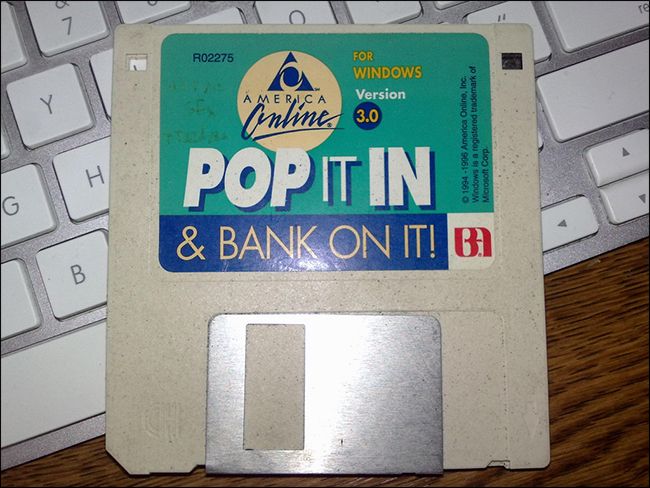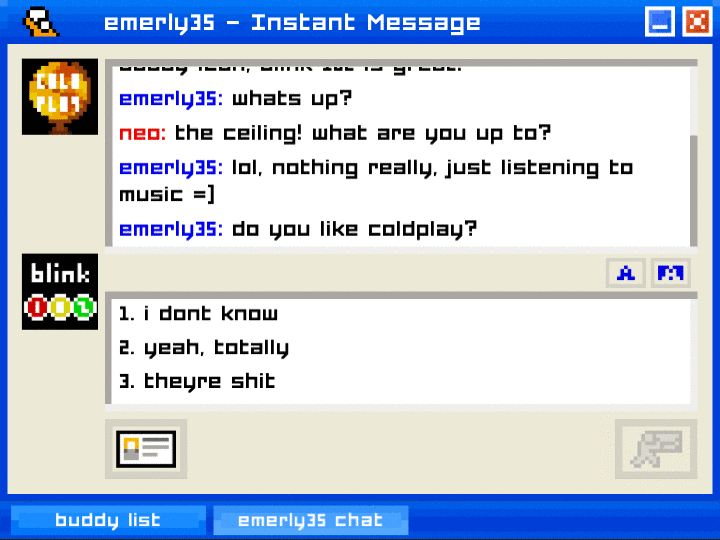Another piece of the retro Internet is dead. AOL's free instant messaging service, called AIM, is shutting down its servers on December 15, 2017, 20 years after it launched...and about ten years after it was last relevant.
If you grew up in the United States, AIM is a nostalgic brand for you. You might want to log in one last time, but it won't be easy: AOL has seemingly scrubbed all download links for the program from the Internet. If you try to download from official sources, you'll see this message instead:
You can find older versions elsewhere, but none of them work, meaning if you want to log in one last time, you'll have to check the web-based AIM.com. I did, and found exactly one friend using it.
We talked for an hour or so; it was nice. But it was honestly surprising that anyone was logged on at all.
Which is odd, because at AIM's peak, the service dominated the US instant messaging market, with tens of millions of active users---impressive for the dial-up age. That was 15 years ago, but in 2017, messaging is a big deal. WhatsApp is worth $1.5 billion, and has more or less the same functionality AIM had 20 years ago on a phone. Amazon has reportedly tried to purchase Slack for $9 billion. Considering Verizon bought AOL, wholesale, for $4.4 billion, it's easy to imagine AIM could have been built into something worthwhile, if only AOL had some vision. They didn't.
AOL Hated AIM From The Beginning
AOL did not publicize the AIM's release 20 years ago, because the executive and marketing teams didn't know it was going to launch. Creators Barry Appelman, Eric Bosco and Jerry Harris built the program in secret, then stuck it on an FTP server with no fanfare. 900 people found and started using the service overnight, and it grew from word of mouth.
AOL was a company that sold access to the Internet, and man: they sold a lot of Internet access. Most everything it made was available only to subscribers; AIM was the main exception. Giving away a program to non-subscribers was not a popular move internally.
According to a great feature by Mashable's Jason Abruzzese, AOL executives wanted to kill the project, and almost fired Bosco for putting it online. Bosco fought to keep the service going, though:
My biggest job as a manager was to keep AIM alive internally, because every single executive vice president wanted to shut it down and kill it. They could not understand the concept of giving away for free something that was of real value to the paying subscriber base. It was always AIM versus AOL. They hated us.
For a project AOL tried to kill from the beginning AIM has certainly lasted a long time. Everything comes to an end eventually, however.
Why Is AIM Dying?
So why is AIM dying? AOL's official statement is maddeningly non-specific:
We know there are so many loyal fans who have used AIM for decades; and we loved working and building the first chat app of its kind since 1997. Our focus will always be on providing the kind of innovative experiences consumers want. We're more excited than ever to focus on building the next generation of iconic brands and life-changing products.
Yeah, that means literally nothing, so we'll just go ahead and state the obvious: AIM is dying because no one uses it anymore. Gmail and Facebook launched integrated chats, and everyone started using those instead. Mobile-first services like WhatsApp have since stolen even more attention. If anything, AIM is being shut down later than makes sense.
Re-Live the Nostalgia
In 2017, notifications are ubiquitous, so it's hard to re-capture the thrill of early-2000s AIM, typing something and waiting for a response as your teenage angst swells up. Emily Is Away comes close.
It's a game that takes place entirely inside AIM, and gets a lot of the little details right. Check it out if you want to re-live an era.
Failing that, you could just check out some of the old sound effects. Enjoy.
Photo credit: Al Pavangkanan



